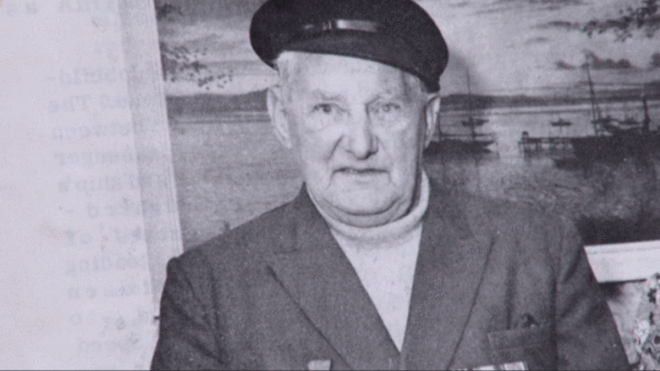Medals expert Mark Smith described the collection as "one of the most amazing group of medals" he had ever seen.
Mr Cargill was on the Carpathia, which rescued Titanic`s survivors in 1912.
He went on to serve in World War One and World War Two and was awarded for bravery and gallantry for his actions in both conflicts.

Asked how his grandfather came to be on the Carpathia, Mr Henderson said: "He was a fisherman and when things were tough he would take himself off to earn some money."
Later, at an event reuniting Titanic`s survivors with their rescuers, a woman who was a child when saved by the Carpathia`s crew approached Mr Cargill to thank him.
Mr Cargill`s military career saw him serve in the Black Watch and the Royal Navy. Mr Henderson, himself a fisherman, said: "I remember him very well. He was a character.
"He had a small fishing boat and I would go to sea with him before school. He would say to me `you need to get to school` and I would say `don`t bother, I`m happy where I am`." Mr Cargill`s medals are kept in a 1914 Christmas tin.
Medals expert Mr Smith, who admitted to shaking as he held the first Carpathia medal he had been able to handle, told Mr Henderson: "You have made my year. "You have one of the most amazing group of medals I have ever seen."
Mr Smith valued the collection at £10,000. Mr Henderson said the medals would remain in his family.

The Carpathia was sailing from New York to Europe when it received a distress call from the Titanic on 15 April 1912.
It immediately changed direction, and travelled almost 60 miles (96km) to the ship`s location. When the ship arrived, the Titanic had already sunk.
The crew spent four hours rescuing survivors from lifeboats before heading back to New York. The medals were awarded by the Titanic Survivors` Committee, chaired by Mrs J.J. `Molly` Brown.
Junior officers received silver medals, while members of the crew were given bronze versions.
More about:
















































